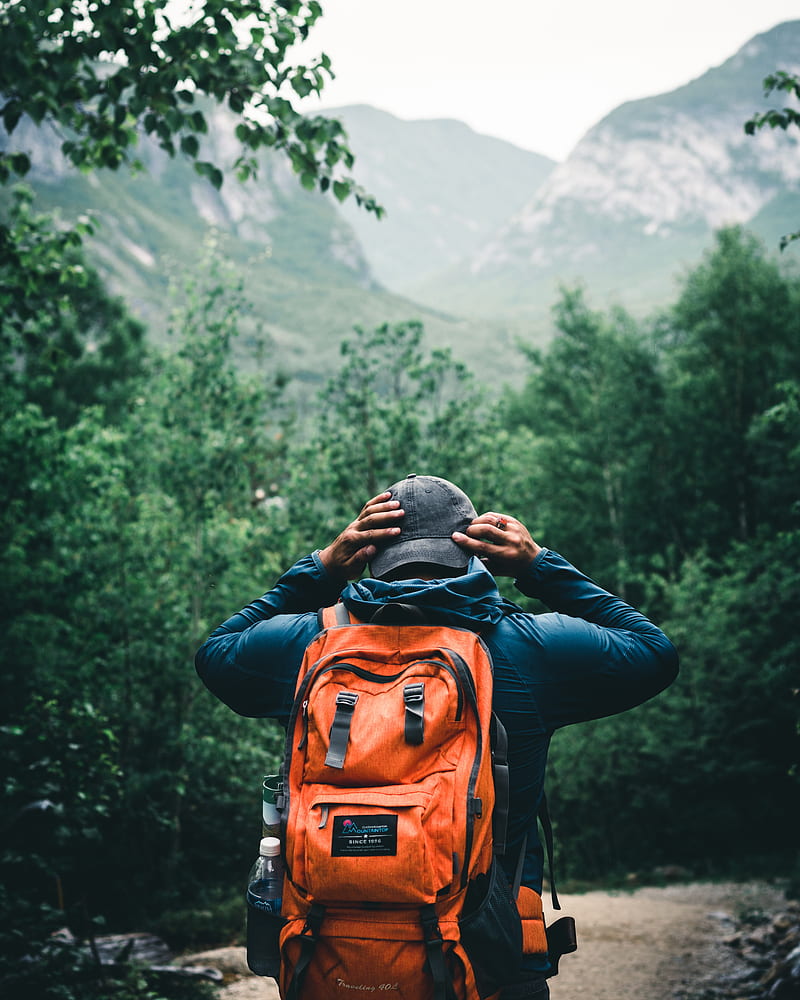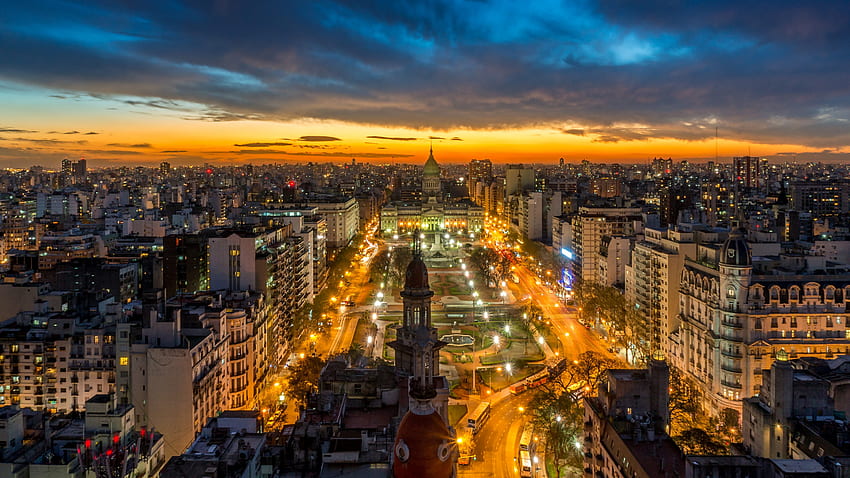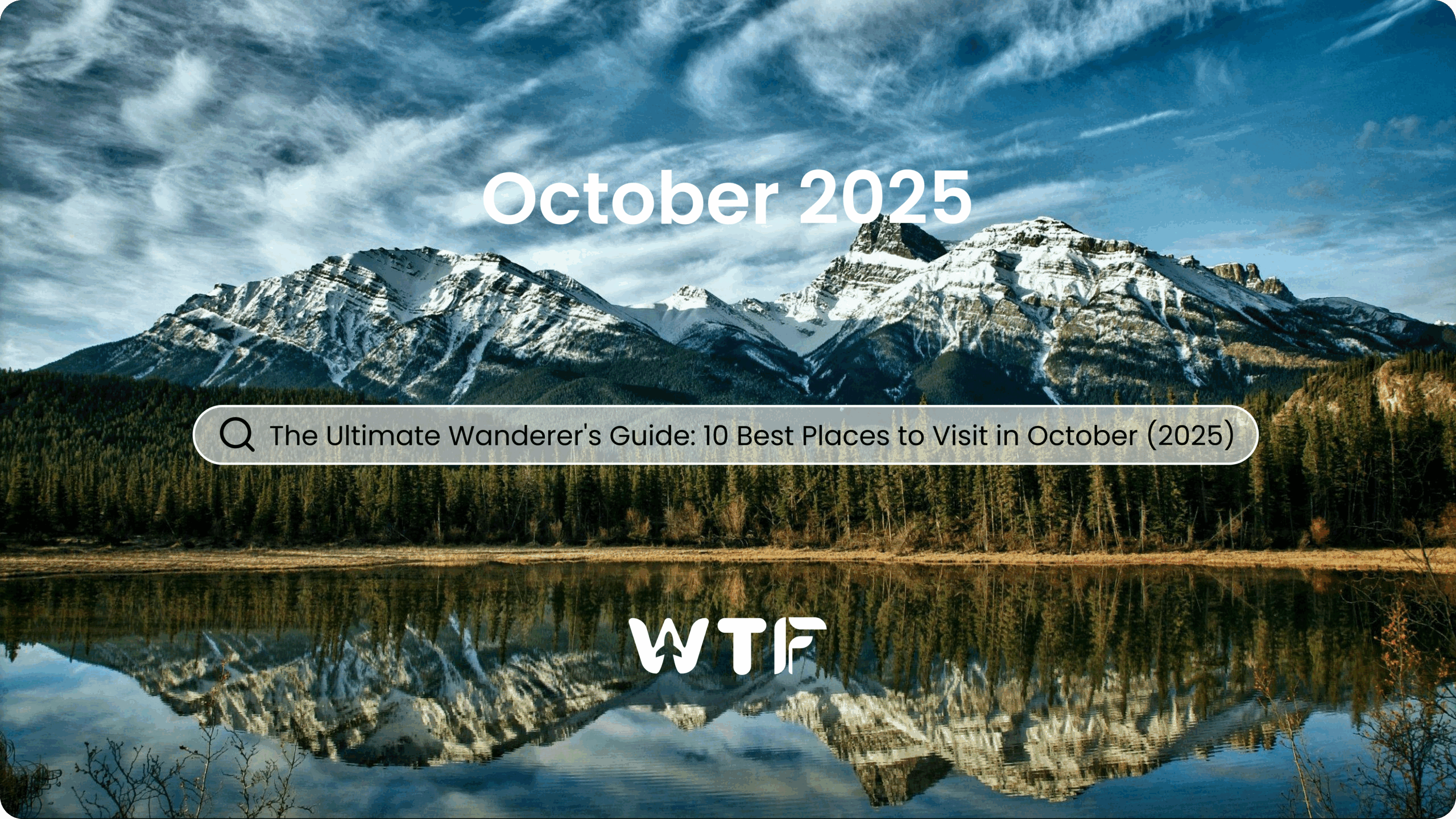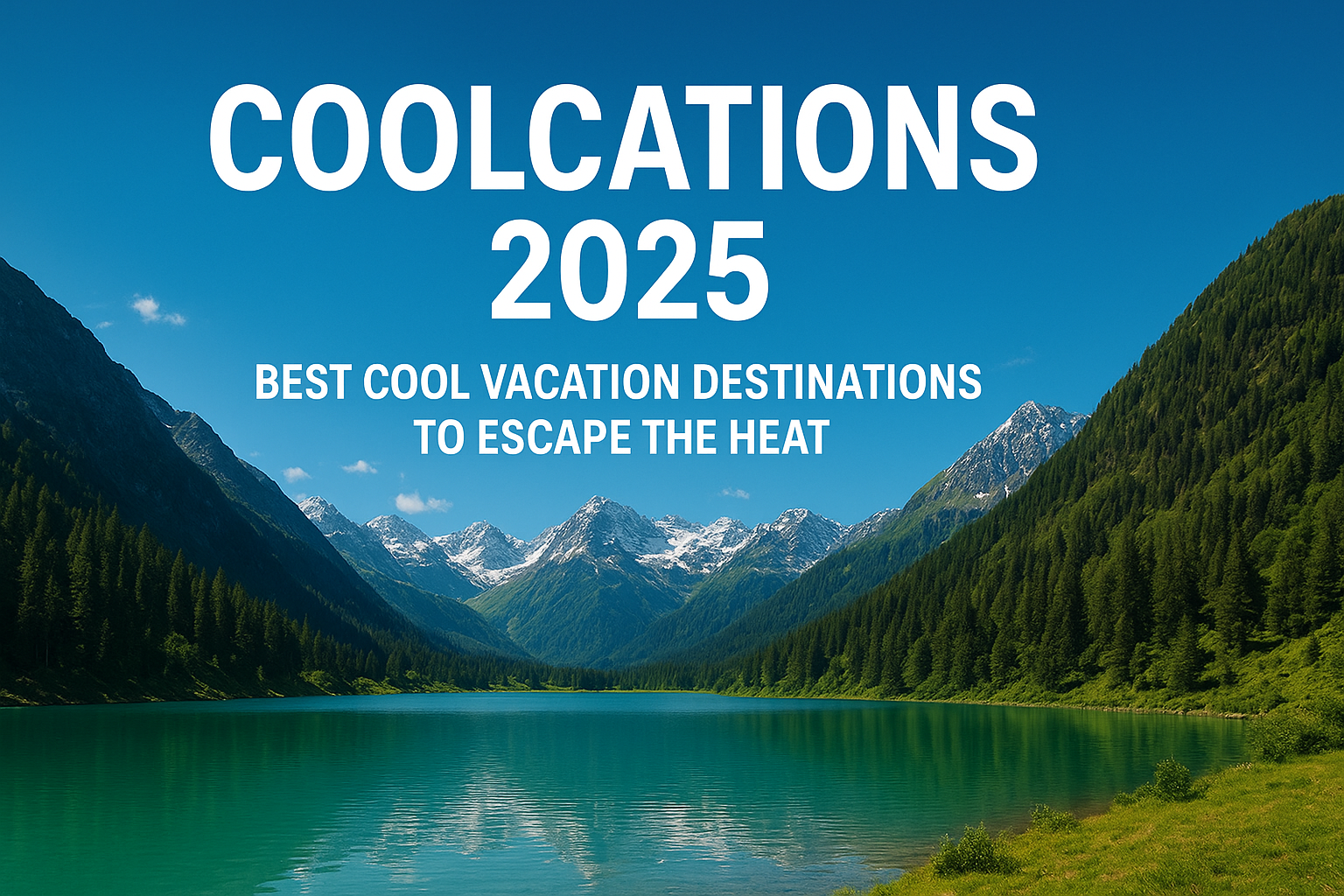Argentina, a vast and diverse South American nation, is a country that beckons travelers with its rich cultural heritage, stunning landscapes, and a gastronomic scene that will leave your taste buds dancing. From the vibrant streets of Buenos Aires to the awe-inspiring wonders of Patagonia, Argentina offers a plethora of experiences that make it a must-visit destination. In this blog post, we’ll delve into the various facets of Argentina, exploring its culture, landscapes, and, of course, its delectable cuisine.
Geo-Culture and History
Geography:
Diverse Landscapes:
- Argentina, the eighth-largest country in the world, is a land of geographical extremes. From the Andes Mountains in the west to the expansive Pampas in the center and the rugged terrain of Patagonia in the south, the country boasts a diverse range of landscapes. The northern regions are characterized by tropical climates and lush jungles, while the south is home to glaciers and fjords.
Andes Mountain Range:
- The majestic Andes Mountains form Argentina’s western border, separating it from Chile. This formidable mountain range is not only a geographical landmark but also a crucial influence on the climate and ecosystems of the region. A haven for outdoor enthusiasts, the Andes offer opportunities for trekking, skiing, and exploring breathtaking natural wonders.
Pampas: Breadbasket of Argentina:
- The vast plains of the Pampas, extending across central Argentina, are the country’s agricultural heartland. Known for their fertile soil, the Pampas are the primary breadbasket of Argentina, supporting the cultivation of wheat, soybeans, and corn. The region is also home to the iconic gaucho culture, with vast ranches and estancias dotting the landscape.
Patagonia: Untamed Wilderness:
- Southern Argentina is dominated by the wild and untamed landscapes of Patagonia. Glaciers, snow-capped peaks, and expansive steppe define this region. The Perito Moreno Glacier, one of the few advancing glaciers globally, is a UNESCO World Heritage site and a testament to the natural wonders found in Patagonia.
Iguazu Falls: Natural Marvel in the North:
- In the northeastern corner, on the border with Brazil, lies the magnificent Iguazu Falls. Nestled within lush rainforests, the falls are a UNESCO World Heritage site and one of the most stunning natural attractions in the world. The combination of numerous waterfalls creates a mesmerizing spectacle that draws visitors from across the globe.
History:
Indigenous Peoples: Pre-Columbian Era:
- Before the arrival of European explorers, the territory now known as Argentina was inhabited by indigenous peoples, including the Mapuche, Quechua, and Guarani. These diverse cultures shaped the region’s early history, leaving behind traces in art, language, and traditions.
Spanish Colonization: 16th Century:
- The Spanish arrived in the 16th century, led by explorers such as Juan de Solis and Ferdinand Magellan. The Spanish colonization laid the foundation for European influence, introducing Christianity, Spanish language, and a feudal system that shaped Argentina’s socio-economic structure.
Struggle for Independence: 19th Century:
- Argentina played a significant role in the Latin American wars of independence in the early 19th century. Led by figures like José de San Martín and Simón Bolívar, the region fought against Spanish rule. Argentina officially declared its independence on July 9, 1816, marking a crucial turning point in its history.
Immigration Waves: Late 19th – Early 20th Century:
- The late 19th and early 20th centuries saw a massive influx of European immigrants, particularly from Italy and Spain. This period of immigration profoundly influenced Argentine culture, contributing to its unique blend of European and Latin American elements.
20th Century Challenges:
- The 20th century brought both prosperity and challenges to Argentina. Economic booms, political instability, and periods of military rule marked this era. The country faced economic crises, notably in 2001, leading to social and political upheaval.
Recent Developments:
- In recent years, Argentina has focused on rebuilding its economy and strengthening democratic institutions. The country remains a key player in regional politics and continues to be a cultural and economic powerhouse in South America.
Exploring the Top 4 Must-Visit Tourist Destinations in Argentina
1. Buenos Aires – La Boca Neighborhood
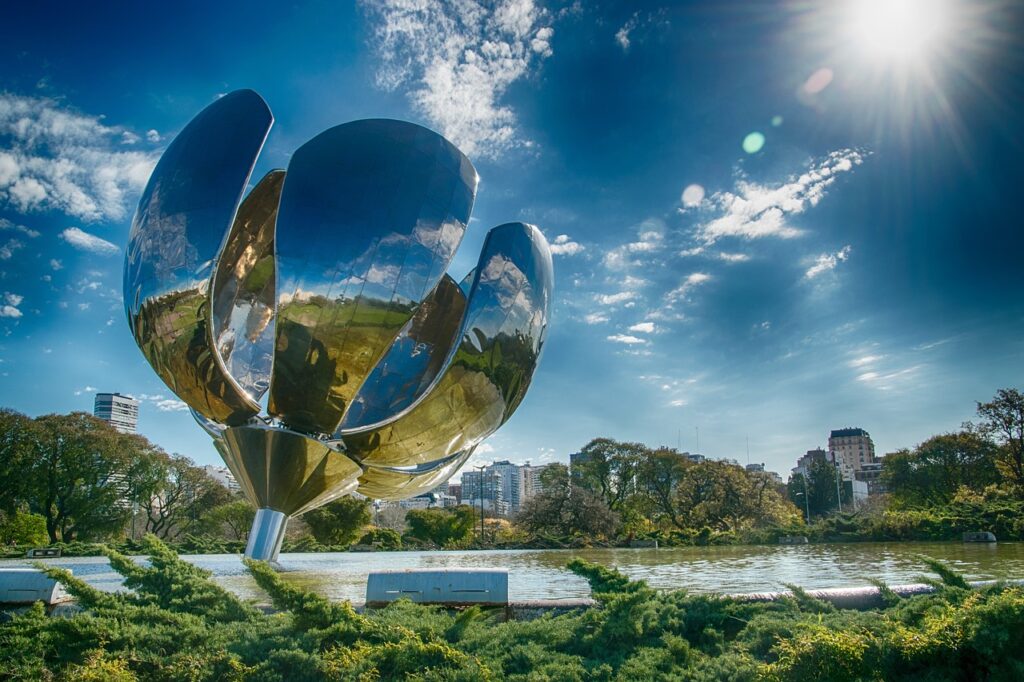
La Boca is a colorful and historic neighborhood in Buenos Aires, renowned for its lively atmosphere, vibrant street art, and tango culture. The iconic Caminito street, lined with brightly painted houses, showcases the neighborhood’s bohemian charm.
Speciality: La Boca is the birthplace of tango, offering visitors the chance to immerse themselves in the rhythmic beats of this passionate dance. The neighborhood is also home to the Boca Juniors stadium, adding a touch of football fervor to its cultural richness.
How to get there using public transport from the main land:
- From the main area of Buenos Aires, take Bus Line 29 or 64, which will bring you close to La Boca. Alternatively, you can use Line C of the subway and then transfer to Bus Line 152.
Type of Transportation Available and Cost:
- Public buses are a cost-effective option, with fares ranging from 20 to 30 Argentine pesos. Taxis are also available but may be relatively more expensive, costing around 150 to 200 Argentine pesos, depending on the distance.
Must-Do Activities Around La Boca:
- Explore the vibrant Caminito street for its colorful buildings and street performances.
- Visit the Boca Juniors stadium or catch a football match for an authentic local experience.
- Immerse yourself in tango at one of the many local milongas (tango dance halls).
- Enjoy traditional Argentine cuisine at local restaurants, with a focus on grilled meats and empanadas.
Entrance Fee:
- Many attractions in La Boca, including Caminito street and the neighborhood itself, are free to explore. However, if you choose to visit museums or specific attractions, entrance fees may vary. For example, the Boca Juniors stadium tour may have an admission fee of approximately 500 Argentine pesos.
2. Iguazu Falls – Iguazu National Park, Misiones Province
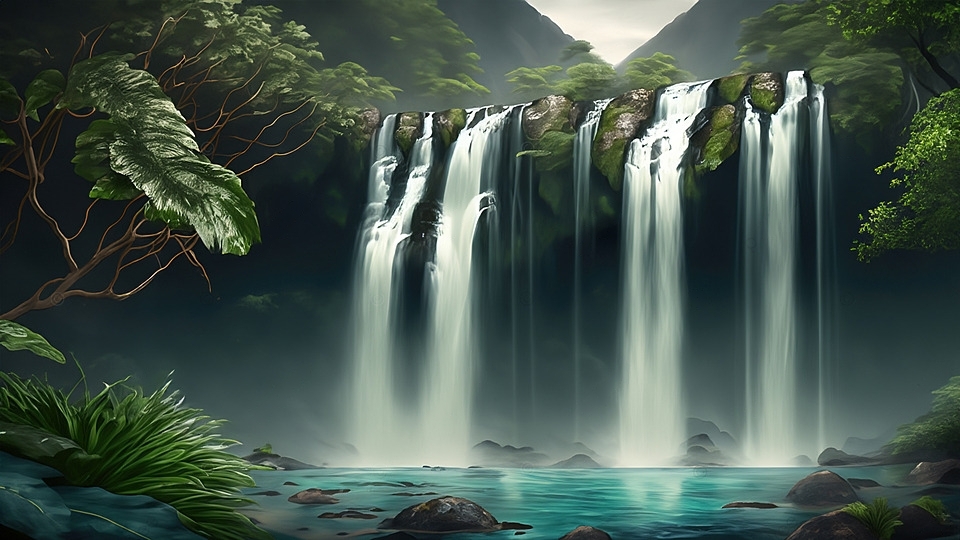
Iguazu Falls is a breathtaking natural wonder situated in the lush rainforests of Iguazu National Park. This UNESCO World Heritage site consists of a series of 275 waterfalls along the Iguazu River, creating a spectacular and awe-inspiring landscape.
Speciality: The falls are known for their immense size, powerful cascades, and the surrounding biodiversity of the national park. Visitors can explore walkways that offer stunning views of the falls from various vantage points.
How to get there using public transport from the main land:
- From Buenos Aires, you can take a direct flight to Cataratas del Iguazu International Airport. From the airport, buses or taxis are available to reach the Iguazu National Park entrance.
Type of Transportation Available and Cost:
- Flights from Buenos Aires to Cataratas del Iguazu International Airport cost around 5,000 to 10,000 Argentine pesos, depending on the season and airline. Local buses or taxis from the airport to the national park may cost around 200 to 500 Argentine pesos.
Must-Do Activities Around Iguazu Falls:
- Take a boat tour to get up close to the falls and experience their power.
- Explore the network of walkways that provide panoramic views of the falls and surrounding landscapes.
- Discover the diverse flora and fauna of Iguazu National Park through guided hikes.
- Visit the nearby town of Puerto Iguazu for local crafts and cuisine.
Entrance Fee:
- As of my last knowledge update in January 2022, the entrance fee for Iguazu National Park for international visitors was approximately 800 Argentine pesos. It’s advisable to check for updated fees before planning your visit.
3. Perito Moreno Glacier – Los Glaciares National Park, Patagonia
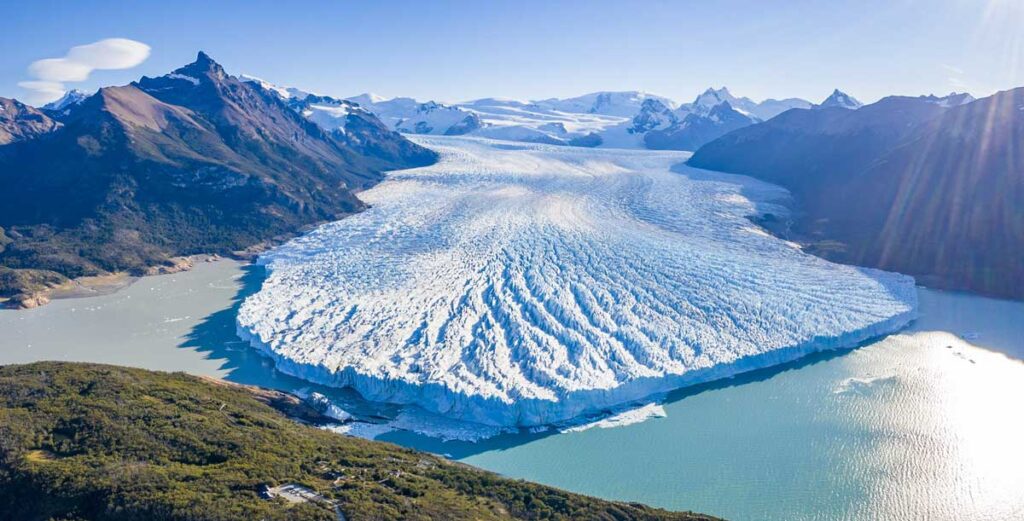
Perito Moreno Glacier is a colossal glacier located in Los Glaciares National Park in Patagonia. This UNESCO World Heritage site is known for its massive ice formations and the unique phenomenon of glacier calving.
Speciality: The glacier’s sheer size and dynamic ice movements make it a captivating natural attraction. Visitors can witness and hear chunks of ice breaking off and crashing into the surrounding waters.
How to get there using public transport from the main land:
- From El Calafate, the nearest town, take a bus from the main bus terminal. The journey to the park entrance takes approximately 90 minutes.
Type of Transportation Available and Cost:
- Buses are the primary mode of public transport, costing around 800 to 1,000 Argentine pesos for a round trip from El Calafate. Private transfer services are also available, with costs ranging from 2,000 to 3,000 Argentine pesos.
Must-Do Activities Around Perito Moreno Glacier:
- Take a boat tour to appreciate the glacier’s magnitude and witness calving up close.
- Hike the well-maintained trails around the glacier for panoramic views.
- Experience ice trekking on the glacier, offered by authorized tour operators.
- Wildlife spotting, including Andean condors and various bird species.
Entrance Fee:
- As of my last knowledge update in January 2022, the entrance fee to Los Glaciares National Park for international visitors was approximately 800 Argentine pesos. It’s advisable to check for updated fees before planning your visit.
4. Salta – Historic Center and Surroundings
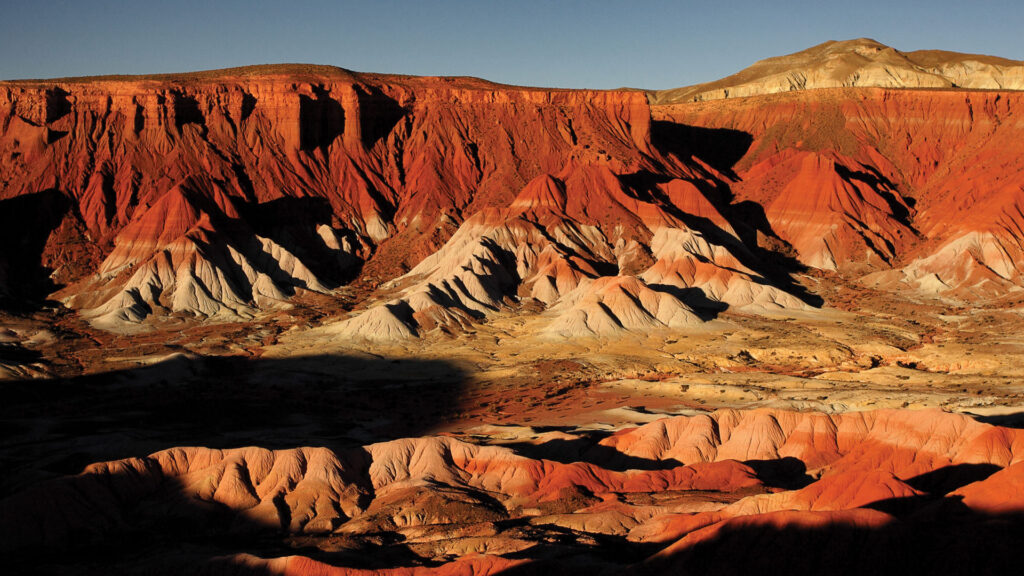
Salta, located in northwestern Argentina, is a city surrounded by stunning mountain landscapes. The Historic Center of Salta preserves colonial architecture, and the city is known for its rich cultural heritage and traditional festivals.
Speciality: Salta offers a unique blend of colonial charm and natural beauty. The surrounding valleys and gorges, such as Cafayate, are famous for their colorful rock formations and vineyards.
How to get there using public transport from the main land:
- Salta has an international airport, or you can take a long-distance bus from major cities like Buenos Aires. Once in the city, local buses or taxis can take you to the Historic Center.
Type of Transportation Available and Cost:
- Flights from Buenos Aires to Salta may cost around 5,000 to 10,000 Argentine pesos. Long-distance buses vary in price depending on the class and company, ranging from 2,000 to 5,000 Argentine pesos. Local buses and taxis within Salta are affordable, with fares around 30 to 100 Argentine pesos.
Must-Do Activities in Salta:
- Explore the Historic Center with its colonial architecture and visit landmarks like the Salta Cathedral.
- Take the cable car (Teleférico) for panoramic views of the city and surrounding mountains.
- Visit the MAAM (High Mountain Archaeological Museum) to learn about Inca culture.
- Take a day trip to Cafayate to explore the Quebrada
Entrance Fee:
There is no entrance fee for the city of Salta itself. However, individual attractions within Salta, such as museums or historical sites, may have specific entrance fees, which can vary. It’s recommended to check the official websites of the attractions you plan to visit for up-to-date information on entrance fees and any available discounts.
Exploring Argentina’s Hidden Treasures: 5 Unexplored Gems
1. Purmamarca – Seven Colors Hill
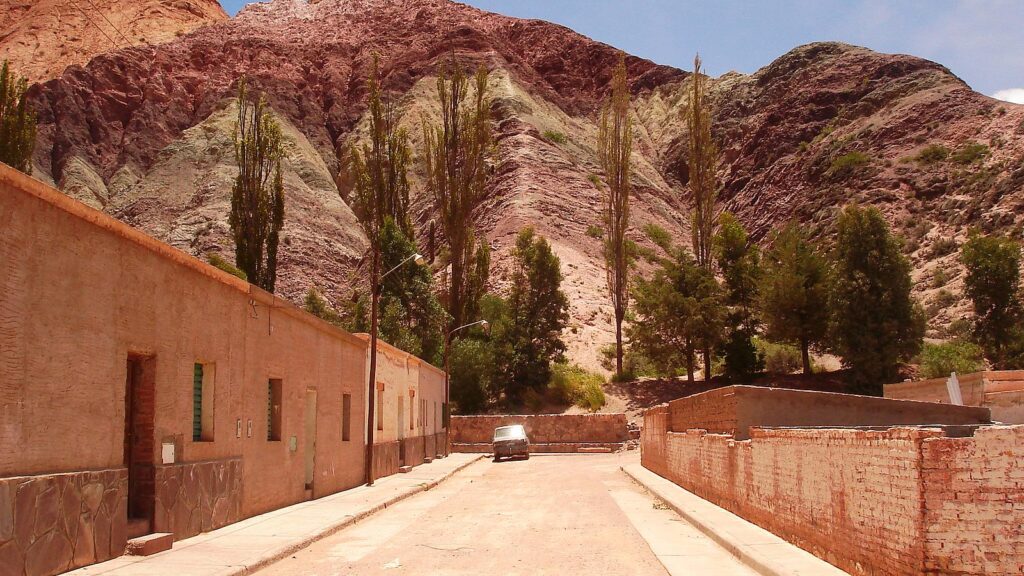
Purmamarca is a hidden gem nestled in the Quebrada de Humahuaca. Its most iconic feature is the Cerro de los Siete Colores (Seven Colors Hill), a geological marvel displaying vibrant hues of minerals.
Speciality: The hill’s colors change throughout the day, creating a stunning visual spectacle. The town itself preserves its indigenous heritage and offers a tranquil escape surrounded by striking landscapes.
How to get there using public transport from the main land:
- From the city of Salta, take a bus to Purmamarca. Buses are available from Salta’s main bus terminal, and the journey takes approximately 4-5 hours.
Type of Transportation Available and Cost:
- Long-distance buses from Salta to Purmamarca cost around 800 to 1,500 Argentine pesos, depending on the bus class and company. Once in Purmamarca, you can explore the town on foot.
Must-Do Activities in Purmamarca:
- Take a leisurely stroll through the town’s cobbled streets and visit the local market.
- Hike or drive to the viewpoint for breathtaking panoramic views of the Seven Colors Hill.
- Explore the nearby Pucara de Tilcara, an ancient pre-Inca fortress.
- Sample regional dishes, including empanadas and locro, at local eateries.
Entrance Fee:
- There is no entrance fee to explore Purmamarca town or enjoy the views of the Seven Colors Hill. However, if you choose to visit specific attractions or take guided tours, there may be associated fees.
2. Villa Traful – Hidden Gem in Patagonia
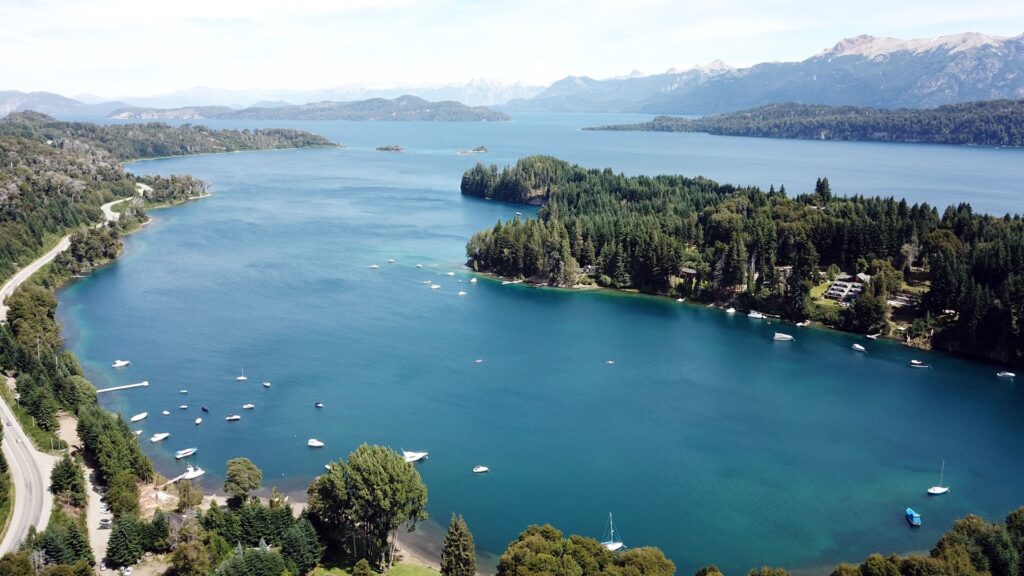
Villa Traful is a serene village situated on the shores of Lake Traful in Northern Patagonia. Known for its tranquility and natural beauty, the village is surrounded by forests, mountains, and pristine lakes.
Speciality: Villa Traful offers a peaceful retreat away from more crowded tourist destinations. The clear waters of Lake Traful and the surrounding landscapes provide a serene backdrop.
How to get there using public transport from the main land:
- From the town of Bariloche, take a bus to Villa La Angostura. From there, another bus or shared taxi can take you to Villa Traful. The journey involves picturesque routes through the Andes.
Type of Transportation Available and Cost:
- Buses from Bariloche to Villa La Angostura cost approximately 500 to 800 Argentine pesos. Shared taxis or private transfers from Villa La Angostura to Villa Traful may cost around 500 to 1,000 Argentine pesos.
Must-Do Activities in Villa Traful:
- Enjoy a boat ride or kayak on Lake Traful, surrounded by stunning mountain scenery.
- Explore the Mirador del Viento for panoramic views of the lake and surrounding landscapes.
- Hike through the nearby Arrayanes Forest for a unique natural experience.
- Relax by the lakeshore and enjoy the tranquility of this hidden gem.
Entrance Fee:
- Villa Traful itself does not have specific entrance fees, but if you choose to participate in guided activities or enter protected areas, there may be associated costs.
3. Cachi – Calchaquí Valleys
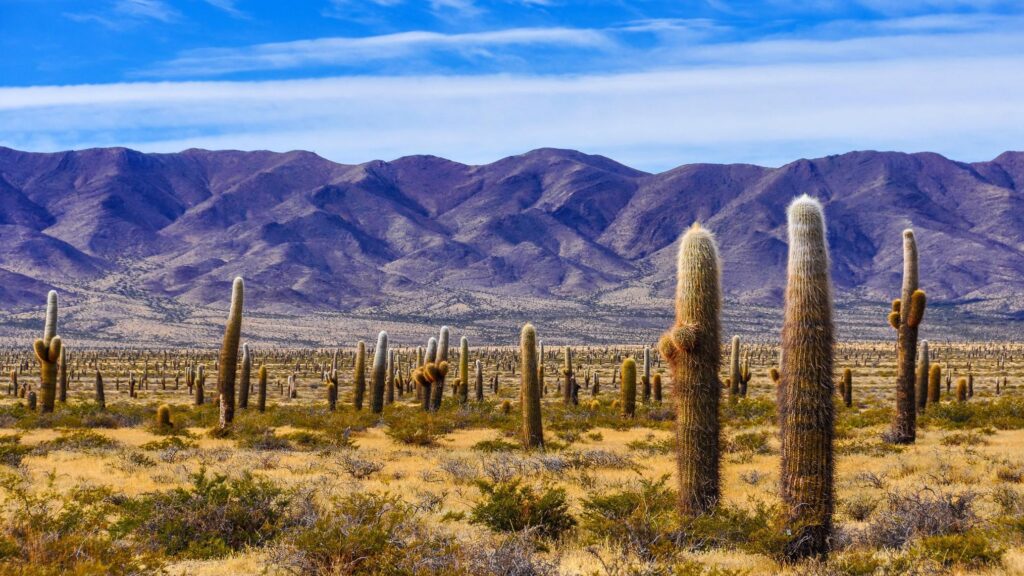
Cachi is a tranquil village located in the Calchaquí Valleys, surrounded by majestic mountains and vineyards. The town features colonial architecture and offers a glimpse into traditional Argentine rural life.
Speciality: Calchaquí Valleys are known for their unique geological formations, including rock formations and colorful mountains. Cachi provides a peaceful escape with its scenic beauty and preserved cultural heritage.
How to get there using public transport from the main land:
- From Salta, buses or shared vans are available to Cachi. The journey takes approximately 4-5 hours, showcasing breathtaking landscapes along the way.
Type of Transportation Available and Cost:
- Bus tickets from Salta to Cachi may cost around 500 to 800 Argentine pesos. Shared vans or private transfers may also be available at varying costs.
Must-Do Activities in Cachi:
- Visit the Cachi Historical Museum to learn about the region’s history and culture.
- Explore the scenic Route 40, which offers stunning views of the Calchaquí Valleys.
- Sample local wines at nearby vineyards.
- Take a guided tour to the Los Cardones National Park for its unique cactus landscapes.
Entrance Fee:
- Entrance fees to specific attractions may vary. It’s recommended to check for any applicable fees at museums or national parks.
4. El Chaltén – Mount Fitz Roy
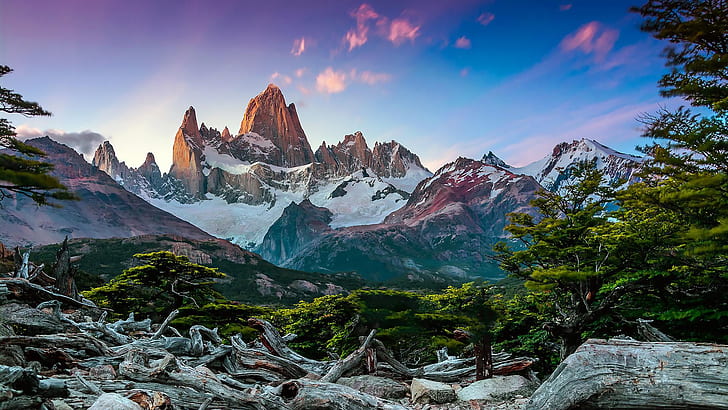
El Chaltén is a charming village located in the Argentine Patagonia, serving as the gateway to the stunning Mount Fitz Roy. The area is a haven for nature lovers, offering hiking trails, glaciers, and breathtaking mountain views.
Speciality: Mount Fitz Roy, known as the “smoking mountain” by locals, is an iconic peak with a distinctive shape. El Chaltén is a base for trekkers and outdoor enthusiasts seeking to explore the surrounding wilderness.
How to get there using public transport from the main land:
- Buses run from El Calafate to El Chaltén. The journey takes approximately 3 hours, providing scenic views of Patagonian landscapes.
Type of Transportation Available and Cost:
- Bus tickets from El Calafate to El Chaltén may cost around 700 to 1,000 Argentine pesos. Private transfers are also available at varying costs.
Must-Do Activities in El Chaltén:
- Hike to Laguna de los Tres for a breathtaking view of Mount Fitz Roy.
- Explore the Viedma Glacier and take a boat tour to witness its impressive ice formations.
- Visit the charming village of El Chaltén and experience its laid-back atmosphere.
- Engage in rock climbing, fishing, or horseback riding in the surrounding wilderness.
Entrance Fee:
- There is no entrance fee to enter El Chaltén or the village itself. However, fees may apply for specific guided tours or access to certain areas within Los Glaciares National Park.
5. Barreal – Valley of the Moon
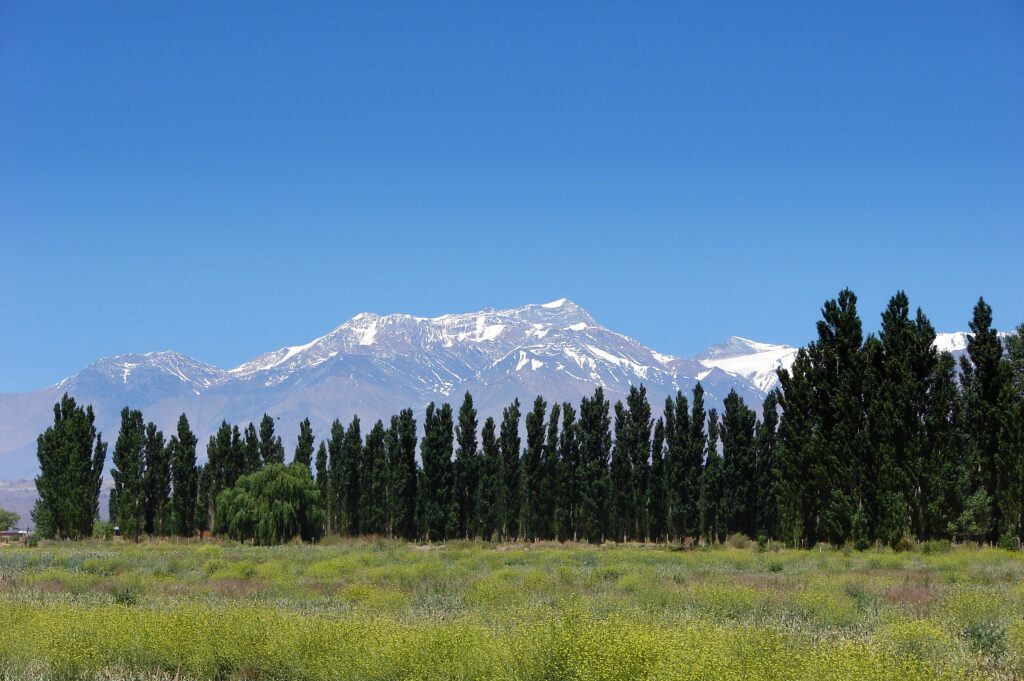
Barreal, situated in the province of San Juan, is often referred to as the “Valley of the Moon” due to its lunar-like landscapes. The area is characterized by vast deserts, unique rock formations, and clear night skies.
Speciality: Barreal offers a tranquil escape with its remote location, making it an ideal destination for stargazing and connecting with nature.
How to get there using public transport from the main land:
- From San Juan, buses or private transfers are available to Barreal. The journey takes approximately 4-5 hours.
Type of Transportation Available and Cost:
- Bus tickets from San Juan to Barreal may cost around 500 to 800 Argentine pesos. Private transfers or shared vans may also be available at varying costs.
Must-Do Activities in Barreal:
- Experience stargazing in one of the best astronomical observation points in Argentina.
- Explore the Ischigualasto Provincial Park, known for its unique rock formations and dinosaur fossils.
- Take a horseback riding excursion through the desert landscapes.
- Enjoy the tranquility of the Valle de Calingasta and its picturesque surroundings.
Entrance Fee:
- Entrance fees may apply for specific attractions such as Ischigualasto Provincial Park. It’s recommended to check for any applicable fees before visiting.
How to get there
1. Flight Details – Cheapest Flights and Rates:
- Airlines: Several international airlines operate flights to Argentina. Common choices include LATAM Airlines, Aerolíneas Argentinas, Delta Air Lines, American Airlines, and more.
- Flight Search Platforms: Utilize online platforms like Skyscanner, Google Flights, or Kayak to compare prices and find the cheapest flights.
- Best Booking Time: Booking in advance or during airline promotions can often result in lower fares.
- Popular Airports: Ezeiza International Airport (EZE) in Buenos Aires and Ministro Pistarini International Airport are major entry points.
2. Cruise, Local Boats – Price:
- Cruises: Some cruise lines offer itineraries that include stops in Argentina. Check with companies like Princess Cruises, Royal Caribbean, or Norwegian Cruise Line for availability and prices.
- Local Boats: For river transport within Argentina, companies like Crucero del Norte offer services. Prices vary based on the route and duration.
3. Local Transportations Inside Argentina:
- Domestic Flights: For long distances, domestic flights are efficient. Aerolíneas Argentinas and LATAM Airlines operate frequent domestic routes.
- Buses: Extensive bus networks connect cities and towns. Companies like Andesmar, Via Bariloche, and FlechaBus offer comfortable long-distance journeys.
- Trains: While not as extensive as buses, trains operate on certain routes. Ferrobaires and Trenes Argentinos are key operators.
- Subway and Buses in Cities: In major cities like Buenos Aires, local transport includes subways (Subte) and buses. SUBE card is used for both, providing a cost-effective solution.
4. Transportation Tips:
- SUBE Card: Obtain a SUBE card for convenient access to public transportation in major cities. It’s rechargeable and can be used on buses, subways, and trains.
- Currency: Have local currency (Argentine pesos) for small transactions, as not all places accept credit cards.
- Taxis: Use registered taxis or ride-sharing services like Uber. Confirm the fare before starting the ride.
- Language: Learn basic Spanish phrases, as English may not be widely spoken in remote areas.
- Altitude: If traveling to high-altitude destinations like Salta or Jujuy, be aware of potential altitude sickness and acclimatize gradually.
Currency & Travel Tips
1. Currency and Tips to Save Money:
- Currency: The official currency is the Argentine Peso (ARS). Check the exchange rate before converting money.
- Tips to Save Money:
- Use ATMs for local currency withdrawals to get the best exchange rates.
- Opt for local markets and street food for cost-effective meals.
- Consider a travel credit card with minimal foreign transaction fees.
2. Budget Accommodations and Locations to Stay On Budget:
- Options: Budget accommodations include hostels, guesthouses, and budget hotels.
- Locations:
- Buenos Aires: San Telmo, Palermo, and Microcentro.
- Cordoba: Nueva Cordoba or Güemes.
- Mendoza: City Center or near General San Martin Park.
3. Where to Book Hostels and PG:
- Online Platforms: Use websites like Hostelworld, Booking.com, or Airbnb to book hostels and guesthouses.
- Direct Booking: Some accommodations offer direct booking through their websites, potentially providing discounts.
4. Public Transport and Its Price:
- Public Transport: Major cities have efficient public transport systems, including buses and subways (Subte in Buenos Aires).
- Price: Public transport fares vary by city. In Buenos Aires, a single subway ride costs around 20 ARS, and bus fares are similar.
5. Local SIM Provider and Best Plan for Tourists:
- Providers: Claro, Movistar, and Personal are prominent providers.
- Best Plan for Tourists: Purchase a prepaid SIM card for data and local calls. Plans often include data allowances and can be recharged easily.
6. Basic Words in Local Language:
- Hello: Hola
- Thank you: Gracias
- Goodbye: Adiós
- Please: Por favor
- Excuse me: Disculpe
- Yes: Sí
- No: No
7. Local Cuisine and Must-Try Foods:
- Empanadas: Handheld pastries filled with various savory ingredients. Cost: 50-100 ARS each.
- Asado: Traditional Argentine barbecue, usually featuring beef cuts. Prices vary based on location.
- Milanesa: Breaded and fried meat cutlets. Affordable, around 150-200 ARS.
- Mate: Traditional herbal tea shared among locals. A mate set costs around 300-500 ARS.
Thinks you need to know
Argentina, a vast and diverse South American nation, is a country that beckons travelers with its rich cultural heritage, stunning landscapes, and a gastronomic scene that will leave your taste buds dancing. From the vibrant streets of Buenos Aires to the awe-inspiring wonders of Patagonia, Argentina offers a plethora of experiences that make it a must-visit destination. In this blog post, we’ll delve into the various facets of Argentina, exploring its culture, landscapes, and, of course, its delectable cuisine.
- Buenos Aires: The Paris of South America:
- Begin your Argentine adventure in the capital city, Buenos Aires. Known for its European-inspired architecture and lively atmosphere, Buenos Aires is often referred to as the “Paris of South America.” Explore the historic neighborhoods of San Telmo and La Boca, where tango music fills the air, and colorful street art adorns the buildings.
- Tango, Art, and Architecture:
- Tango, the passionate and sultry dance, originated in the working-class neighborhoods of Buenos Aires. Attend a tango show to witness the artistry of this dance form, or try your hand (or feet) at a tango lesson. The city is also a haven for art enthusiasts, with numerous museums and galleries showcasing the works of renowned Argentine artists. Don’t miss the chance to admire the city’s eclectic architecture, from the neoclassical Teatro Colon to the modern Puente de la Mujer.
- Natural Wonders of Patagonia:
- Head south to Patagonia, a region known for its breathtaking landscapes. Explore the awe-inspiring Perito Moreno Glacier, a UNESCO World Heritage site, where massive ice formations create a spectacle against the backdrop of the Andes. Hike in Los Glaciares National Park or embark on a boat tour to witness the sheer magnitude of these icy wonders.
- Iguazu Falls: Nature’s Masterpiece:
- In the northeastern corner of Argentina lies the spectacular Iguazu Falls, a natural wonder that spans the border with Brazil. Marvel at the power and beauty of the falls as you explore the surrounding national parks. Walk along well-maintained trails and take a boat ride to get up close and personal with this awe-inspiring cascade of water.
- Argentine Cuisine: A Gastronomic Delight:
- No visit to Argentina is complete without indulging in its world-renowned cuisine. Sink your teeth into succulent Argentine steaks, expertly grilled and served with chimichurri sauce. Sample traditional empanadas, savory pastries filled with meat, cheese, or vegetables. Pair your meals with a glass of Malbec, Argentina’s signature red wine, produced in the renowned vineyards of Mendoza.
- Mate Culture: Sharing a Sip of Tradition:
- Experience the unique culture of mate, a traditional herbal tea that holds a special place in Argentine social customs. Join locals in parks or public spaces as they share mate from a communal gourd, fostering a sense of community and friendship.
Wanderer’s Word
In conclusion, Argentina beckons with its diverse landscapes, cultural treasures, and budget-friendly travel options. Optimize your journey by considering cost-effective strategies such as using local currency, booking budget accommodations through platforms like Hostelworld, and navigating efficiently with public transportation. Explore hidden gems like Purmamarca’s Seven Colors Hill and Villa Traful in Patagonia, ensuring a unique and economical travel experience. Stay connected with a local SIM card for seamless communication and embrace the local culture by mastering basic phrases in Spanish. Indulge in Argentina’s culinary delights, from savory empanadas to sizzling asado. As you embark on this South American adventure, these savvy travel tips pave the way for an enriching experience without compromising your budget. Unlock the magic of Argentina while making every peso count.
"El que mucho abarca, poco aprieta - He who embraces too much, squeezes too little"
